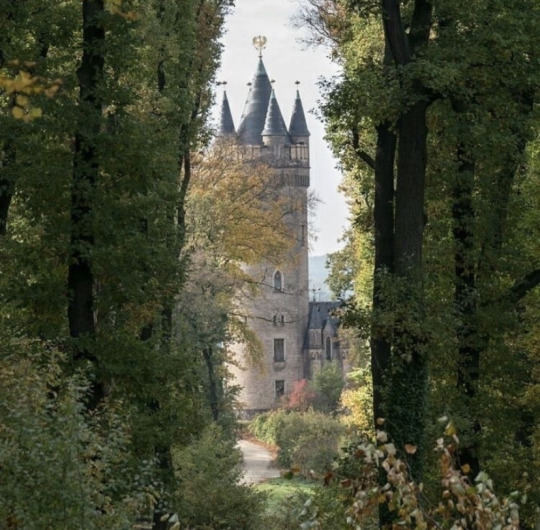i am ritz and i have something to say. | contact [email protected]
Don't wanna be here? Send us removal request.
Text
POST ARCHIVE !

Photo by Simon Parent.
1: Building a Greener Tomorrow: The Push for Carbon-Neutral Architecture in the Philippines
2: Embracing Progress: A Definitive Case for the Demolition of Sta. Mesa Fire Station 8
3: Striking a Balance: The Case for Heritage Preservation in Suburban Development
0 notes
Text
Striking a Balance: The Case for Heritage Preservation in Suburban Development

In today's rapidly changing urban landscape, the preservation of heritage in suburban developments stands as a crucial issue at the intersection of history, culture, and progress. It prompts us to ask: should we prioritize the preservation of historical structures and neighborhoods, or should we pave the way for modernization and development at the expense of our past? Let's explore this topic further, weighing the positives and negatives of preservation while considering the delicate balance between urbanization and gentrification.
Preserving heritage in suburban developments holds undeniable value. It serves as a testament to our collective history, offering a tangible link to bygone eras and cultural identities. These preserved elements enrich the fabric of our communities, fostering a sense of belonging and pride among residents. In an age of globalization, where cities risk becoming indistinguishable from one another, heritage preservation adds depth and uniqueness to our urban landscape, making our neighborhoods more vibrant and appealing.
On the positive side, heritage preservation brings about numerous benefits. It enhances the aesthetic appeal of suburban areas, attracting tourists and stimulating economic activity. Furthermore, historic buildings often embody sustainable design principles, promoting environmental responsibility and resilience. However, challenges arise when we consider the practicalities of preservation. The cost of maintaining and restoring historical structures can be prohibitive, and strict regulations may hinder the adaptability of suburban developments to meet evolving needs.
The debate between leaving suburban areas to eventual urbanization and succumbing to brash gentrification by profit-driven developers highlights the need for thoughtful planning and community involvement. Allowing unchecked urbanization risks the loss of valuable heritage and cultural assets, eroding the identity of our communities. Conversely, gentrification can lead to the displacement of long-time residents and the commodification of heritage for commercial gain.
Finding a middle ground is essential. By engaging in collaborative decision-making processes involving various stakeholders, we can strike a balance between preservation and progress. This approach ensures that suburban developments evolve in a manner that honors their heritage while meeting the needs of present and future generations. It requires us to recognize the intrinsic value of our past while embracing innovation and inclusivity in shaping the future of our communities.
In conclusion, the preservation of heritage in suburban developments is a complex and nuanced endeavor. While challenges exist, the benefits of preservation far outweigh the drawbacks. By adopting a holistic approach that values our history and fosters sustainable development, we can create suburban communities that are both culturally rich and forward-thinking. It's time to embrace our past as we build towards a brighter future.
References: https://business.inquirer.net/363665/preserving-heritage-in-suburban-developments Photo of Nelly Gardens, Iloilo from https://emilianohudtohan.com
0 notes
Text
Embracing Progress: A Definitive Case for the Demolition of Sta. Mesa Fire Station 8

Within the architectural landscape, the Santa Mesa Fire Station 8 is a prime example of a structure at the intersection of history and necessity in the ongoing struggle between preservation and progress. It is imperative that architects take a pragmatic view of the situation and make a strong case for demolishing this century-old structure. Although we appreciate the importance of preserving the past, we also have to face the structural difficulties and modernization requirements that make the existing fire station unfit for continuous operation.
The drainage system and ceiling of Santa Mesa Fire Station 8 are among the many facilities that have been compromised, according to the Bureau of Fire Protection - National Capital Region (BFP-NCR). Only 150 square meters of the original 335 square meters will be salvageable after the road widening project, which means a full reconstruction is required, according to Fire Superintendent Emmanuel Ricafort. In this instance, preservation efforts would mean keeping part of the building, which would impair its historical significance and functionality.
Ricafort emphasizes how the reconstruction project is in line with the BFP's modernization program. Staying put in an era where infrastructure and technology for fighting fires have advanced dramatically increases the risk of reducing the efficacy and efficiency of fighting fires. The need for a new structure goes beyond simple aesthetics; it is a necessary step in making sure the Santa Mesa Fire Station satisfies modern operational requirements.
Renacimiento Manila, a cultural organization, prioritizes sentimentality over utility when arguing for strengthening and retrofitting the current structure. A careful analysis indicates that the costs and viability of these actions might exceed the advantages. As it stands, the Santa Mesa Fire Station is an antiquated structure that cannot adequately house the manpower and equipment needed for modern firefighting.
The Santa Mesa Fire Station is historically significant, but maintaining the physical structure is not necessary for its preservation. Modern documentation methods, such as virtual reconstructions and 3D scanning, allow the fire station's essence to be digitally preserved. This meets the need for advancement and functionality without sacrificing the ability of future generations to access and comprehend the historical context.
In conclusion, the demolition of Santa Mesa Fire Station 8 is not a rejection of history but a pragmatic acknowledgment of the imperatives of modernization. As architects, we have a duty to put practicality, economy, and security ahead of sentimentality. The reconstruction that is being suggested is in line with the changing requirements of the fire service and guarantees that advancement will not be impeded by the constraints of the past. Digital methods can effectively preserve the Santa Mesa Fire Station's legacy, enabling us to embrace progress without sacrificing our ties to the past.
Reference: https://www.gmanetwork.com/news/topstories/metro/893779/century-old-fire-station-in-manila-set-for-demolition/story/ Photo by Renacimiento Manila
0 notes
Text

Renovation of two Houses Between Party Walls by argbag. Tarrasa, Spain.
0 notes
Text

Foundation for Polish Science Headquarters by FAAB Architektura. Photo by Bartlomiej Senkowski.
0 notes
Text
Building a Greener Tomorrow: The Push for Carbon-Neutral Architecture in the Philippines

The idea of having carbon-neutral buildings in the Philippines is pretty cool, considering the crazy growth in real estate. The article makes a good point about how our construction habits are messing with the environment, especially with all the electricity we're gobbling up. But hey, carbon-neutral buildings could be the game-changer we need.
Now, getting these eco-friendly structures all over the place won't be a walk in the park. There are hurdles like big upfront costs and dealing with rules and regulations. Still, the benefits, both for our wallets and the planet, make it worth thinking about. The fact that the government is pushing for less greenhouse gas emissions and has access to funds like the Green Climate Fund gives me some hope.
Architects need to get on board with this shift. It's not just about drawing pretty buildings; it's about making them energy-efficient and eco-friendly. Keeping up with the latest green tech and sustainable design practices is a must for architects. They've got to be the green warriors of construction.
Looking at the industry right now, it seems like more people are waking up to the whole eco-friendly trend, but there's still a long way to go. Everyone – architects, builders, policymakers, and regular folks – needs to team up to make this happen.
As someone eyeing a career in architecture, especially one that's all about sustainability, staying in the loop with the latest green building tricks is key. It's not just about designing pretty spaces; it's about making sure they don't wreck the planet. And let's not forget, spreading the word about the benefits of going green could speed up the whole process. It's not just a job; it's a mission.
Picture of Taisugar Circular Village, Taiwan. Credits to Studio Millspace, ArchDaily.
1 note
·
View note






